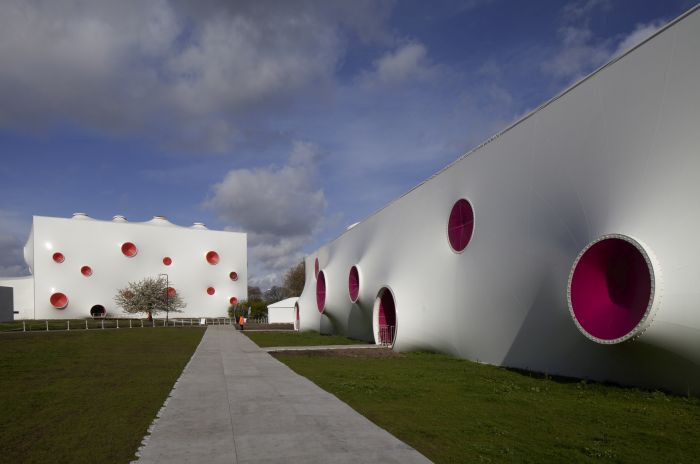Buildings for Movement
2021 is the year of sports – and not only in Graz, as the Summer Olympic Games have also been scheduled for this year. To mark this occasion, the HDA is showing selected buildings that offer a specific space for movement, catering to the most diverse forms of sporting activity.
Nowadays sporting activity has become an important part of everyday life. Whether physical exercise in a fitness studio, or jogging in the neighborhood, today sport is associated with lifestyle, fun and health awareness. It is well-known that exercise has a positive physical and psychological impact on our well-being, the WHO recommends half an hour of training a day. The cultural and social significance of sporting events and competitions was also recognized as far back as ancient Greece. Sport connects people, promotes tolerance and respect for individuals and the community, and supports social inclusion.
Over time, the architecture for the various sports has changed and is no longer represented by the typology of the high school, with the spatial presence of increasingly sophisticated sports buildings becoming ever more diverse. Whether skateboarding, bouldering, swimming, skiing in the city, dancing or archery, every sport is expressed in an individual building shape suitable for the specific activity. The environment in which the buildings are constructed plays an important role. Due to the limited building land in cities, condensed concepts are often required here. Sports areas expand the public space and become an important meeting point for the neighbourhood. Existing buildings or roof areas are converted in unconventional ways, while sports facilities are to be integrated into existing green spaces as carefully and sensitively as possible.
The spectrum of examples from all over Europe shown in the exhibition presents different planning as well as constructive approaches and also addresses historical and social questions about sport and exercise in everyday urban and rural life.
All the selected buildings succeed in making a substantial and aesthetic contribution that extends beyond the urban or natural environment. A "healthy mind lives in a healthy body" is a well-known quotation by Decimus Iunius Iuvenal from the 2nd century A.D. This applies in particular to the "building", the quality and architectural presence of which has an impact on the psyche and physical structure of the environment and the users. Its functionality both presents and promotes the enjoyment of participating in the respective sport to the outside world.
The exhibition invites all athletes and sports enthusiasts on a journey of discovery through these unconventional sports facilities.
